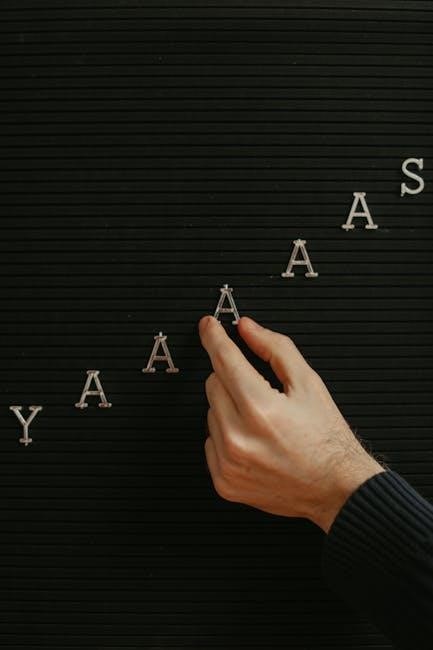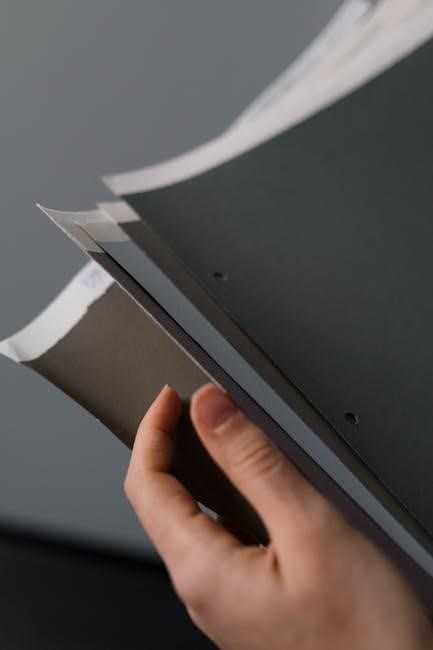Singer Simple 3116 Manual: A Comprehensive Guide

Welcome to your comprehensive guide to the Singer Simple 3116 sewing machine! Whether you’re a beginner or an experienced sewer, this manual will walk you through everything you need to know. From threading to troubleshooting, we’ve got you covered, ensuring a seamless sewing experience.
The Singer Simple 3116 is designed as an accessible sewing machine, particularly for beginners venturing into the world of sewing. Its user-friendly design and straightforward functionality make it an excellent choice for basic sewing tasks and simple projects. This machine is equipped with essential features that allow new sewers to learn and practice fundamental techniques without being overwhelmed by complex settings.
The Singer 3116 offers a selection of built-in stitches, including basic, stretch, and decorative options, providing versatility for various sewing needs. Its automatic needle threader simplifies the setup process, saving time and reducing eye strain. Additionally, the one-step buttonhole feature makes creating professional-looking buttonholes effortless. The inclusion of multiple presser feet further expands the machine’s capabilities, enabling users to tackle different types of fabrics and sewing applications.
The Singer Simple 3116 aims to provide a smooth and enjoyable sewing experience for beginners. Its intuitive design and essential features make it easy to learn and master basic sewing skills, laying a solid foundation for future sewing endeavors.
Key Features of the Singer 3116
The Singer 3116 sewing machine boasts several key features designed to enhance the sewing experience, particularly for beginners. One notable feature is its automatic needle threader, which simplifies the threading process, saving time and frustration. The machine also offers a variety of built-in stitch patterns, including basic, stretch, and decorative stitches, allowing for versatility in sewing projects.
Another significant feature is the one-step buttonhole function, which enables users to create professional-looking buttonholes with ease. The machine also includes multiple presser feet, catering to different sewing needs and fabric types. Additionally, the free arm design provides convenience when sewing cuffs, collars, and other small or cylindrical items. The adjustable stitch length and width settings offer further customization options, allowing users to fine-tune their stitches to achieve the desired results.
These features collectively make the Singer 3116 a user-friendly and versatile sewing machine, suitable for a wide range of sewing projects and skill levels. Its ease of use and comprehensive feature set make it an excellent choice for both beginners and experienced sewers alike.
Understanding the Parts Diagram
Navigating the parts diagram of your Singer Simple 3116 is crucial for maintenance, troubleshooting, and understanding how each component contributes to the machine’s functionality. The diagram serves as a visual map, identifying each part by name and number, enabling you to locate and understand its role within the sewing machine. Familiarizing yourself with this diagram will empower you to perform basic repairs and maintenance tasks effectively.
Typically, the diagram will illustrate components such as the needle, presser foot, bobbin case, tension dial, stitch selector, and various levers and knobs. Each part plays a specific role in the sewing process, and understanding their interrelation is key to resolving issues. For instance, the tension dial controls the thread tension, while the stitch selector allows you to choose different stitch patterns. The bobbin case holds the bobbin, which provides the lower thread for creating stitches.
By carefully studying the parts diagram, you’ll gain a deeper understanding of how your Singer 3116 operates, enabling you to identify potential problems and communicate effectively with repair technicians if more complex issues arise. This knowledge is invaluable for prolonging the life of your machine and ensuring smooth sewing operations.
Threading the Singer 3116: A Step-by-Step Guide
Threading your Singer Simple 3116 correctly is the foundation for successful sewing. Begin by raising the presser foot and ensuring the needle is in its highest position. Place the spool of thread on the spool pin, securing it with the spool cap. Next, guide the thread through the thread guides, following the numbered diagram on your machine.
Carefully bring the thread down around the tension disc, making sure it sits snugly between the discs. Then, lead the thread up through the take-up lever, ensuring the thread is properly engaged. Guide the thread down towards the needle, and use the automatic needle threader, if equipped, or manually thread the needle from front to back.
Finally, pull a length of thread through the needle eye. Raise the presser foot again and gently pull both the top and bobbin threads towards the back of the machine; Ensure both threads are long enough for sewing. A properly threaded machine will produce even and consistent stitches, while incorrect threading can lead to skipped stitches, thread breaks, and fabric jams. Always refer to your manual for the specific threading path for your Singer 3116 model.
Operating the Machine: Basic Sewing Techniques
Once your Singer Simple 3116 is threaded, you’re ready to begin sewing! Start by placing your fabric under the presser foot, aligning the edge of the fabric with the desired seam allowance. Lower the presser foot and gently hold both the top and bobbin threads as you begin to sew. Use the foot pedal to control the speed of the machine, maintaining a consistent pace for even stitches.
For straight stitches, guide the fabric in a straight line, allowing the feed dogs to move the fabric naturally. Avoid pulling or pushing the fabric, as this can result in uneven stitches or needle breakage. When you reach the end of your seam, stop with the needle in the down position, raise the presser foot, and pull the fabric away from the machine. Cut the threads, leaving a tail of a few inches.
To secure your stitches, you can use the reverse sewing function. Sew a few stitches forward, then engage the reverse lever and sew a few stitches back over the same area. Release the reverse lever and continue sewing forward. This technique helps prevent seams from unraveling. Experiment with different stitch patterns and fabric types to become more comfortable with your machine’s capabilities. Always practice on scrap fabric before starting a new project.
Troubleshooting Common Issues: Jams and Tension Problems
Even with proper care, you might encounter occasional issues with your Singer Simple 3116. Fabric jams are a common problem, often caused by tangled threads or incorrect threading. If a jam occurs, immediately turn off the machine and carefully remove the fabric. Check the bobbin area for any tangled threads and re-thread both the top and bobbin threads, ensuring they are properly seated in the tension discs.
Tension problems can manifest as loose stitches, puckered fabric, or thread breakage. If the top thread is too loose, increase the top thread tension. If the bobbin thread is too loose, decrease the top thread tension. Make small adjustments and test the stitch on a scrap of fabric until the tension is balanced.
Another potential issue is needle breakage, which can be caused by using the wrong type of needle for the fabric, sewing too fast, or pulling the fabric. Always use the correct needle size and type for your fabric and avoid forcing the fabric through the machine; If the problem persists, consult the manual or seek assistance from a qualified sewing machine technician. Regularly cleaning and oiling your machine can also help prevent many of these issues.
Adjusting Stitch Patterns and Length
The Singer Simple 3116 offers a variety of stitch patterns to enhance your sewing projects. Selecting the desired stitch is straightforward using the stitch selection dial. Rotate the dial to align the desired stitch number with the indicator mark on the machine. Experiment with different stitches on scrap fabric to understand their unique characteristics and applications.
Adjusting the stitch length is equally important for achieving professional-looking results. The stitch length dial allows you to modify the distance between each stitch, affecting the overall appearance and strength of the seam. Shorter stitch lengths are ideal for delicate fabrics and intricate details, while longer stitch lengths are suitable for heavier fabrics and basting.
To adjust the stitch length, simply turn the dial to the desired setting. Refer to the manual for recommended stitch length settings for different fabric types and sewing techniques. Always test the stitch length on a scrap of fabric before sewing your project to ensure it meets your requirements. Fine-tuning both stitch pattern and length enables creative control and precise execution in your sewing endeavors.
Using the Automatic Needle Threader
The Singer Simple 3116 features an automatic needle threader, a convenient tool designed to simplify the threading process. To use it effectively, begin by raising the needle to its highest position by turning the handwheel towards you. Ensure the needle is correctly oriented with the eye facing forward.

Next, lower the needle threader lever as far as it will go. This action engages the mechanism that will guide the thread through the needle eye. Hook the thread around the small hook or guide on the threader, following the diagram usually printed on the machine near the threader.
Gently release the needle threader lever. As it returns to its original position, it will pull a loop of thread through the needle eye. Grasp the loop of thread and pull it completely through the eye. You are now ready to begin sewing. If the threader doesn’t work correctly, double-check that the needle is fully raised and correctly positioned, and that you’ve followed the threading path accurately. This feature is a significant time-saver, especially for those with visual impairments or those who find manual threading difficult.
Maintenance and Cleaning Tips

Regular maintenance is crucial for keeping your Singer Simple 3116 sewing machine in optimal condition. Start by unplugging the machine to ensure safety. After each project, or after several hours of use, clean the bobbin area. Remove the bobbin case and use a small brush, preferably the one included with the machine, to gently remove lint and dust.
Pay close attention to the feed dogs, as they tend to accumulate fabric fibers. Periodically, oil the machine according to the manufacturer’s instructions. Typically, this involves placing a drop or two of sewing machine oil in designated oiling points, often indicated in the manual or on the machine itself. Avoid over-oiling, as this can attract more dust.
Clean the exterior surfaces with a soft, damp cloth. Never use harsh chemicals or abrasive cleaners. Store the machine in a clean, dry place, preferably covered, to protect it from dust and moisture. Regularly check the needle for sharpness and replace it when necessary to prevent skipped stitches and fabric damage. Following these simple maintenance tips will extend the life of your Singer Simple 3116 and ensure smooth, consistent performance.
Available Accessories and Parts
The Singer Simple 3116 sewing machine comes with a range of accessories to enhance your sewing experience. Standard accessories typically include several presser feet, such as the all-purpose foot, zipper foot, buttonhole foot, and button sewing foot. Each foot is designed for specific tasks, making sewing various projects easier and more efficient.

Additional accessories that can be purchased separately include quilting feet, blind hem foot, and overcasting foot, expanding the machine’s capabilities. Replacement parts, such as bobbins, needles, and screwdrivers, are readily available to ensure continuous operation. Using Singer-branded accessories and parts is recommended to maintain the machine’s performance and longevity.
When purchasing needles, select the appropriate size and type for the fabric being used. Different types of needles are designed for knit fabrics, denim, and delicate materials. Bobbins should also be compatible with the Singer Simple 3116 to prevent tension issues. Regularly checking and replacing worn parts will help keep your machine running smoothly. Explore available accessories to unlock the full potential of your sewing machine and tackle a wider variety of projects with ease.
Downloading the Manual and Finding Support
Accessing the Singer Simple 3116 manual is straightforward. You can often find a digital copy on the Singer website or through authorized retailers. Look for a PDF version to easily download and view on your computer, tablet, or smartphone. Having a digital manual allows for quick reference during sewing sessions, ensuring you can troubleshoot issues or learn new techniques on the go.
In addition to the manual, numerous online resources offer support for Singer sewing machines. Websites like HelpOwl.com provide answers to frequently asked questions and allow users to connect with other Singer owners. Online forums and communities dedicated to sewing can also be valuable sources of information, tips, and advice.
If you require more direct assistance, consider contacting Singer’s customer support through their website or by phone. They can provide guidance on specific issues, warranty information, and authorized repair services. Local sewing machine repair shops can also offer expert assistance for more complex problems. Remember to have your machine’s model number handy when seeking support to ensure you receive the most accurate information.
